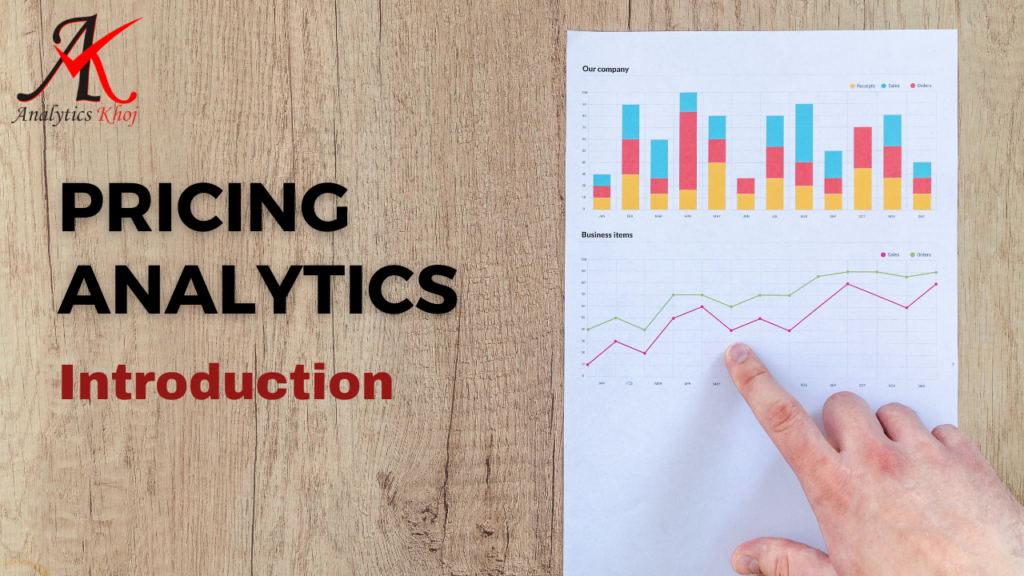Why do we need “Pricing Analytics or Optimization”?
When it comes to pricing their products and services in today’s highly competitive market, businesses confront several issues. These pricing decisions hold immense power as they directly influence a company’s revenue, profitability, market position, and overall success. To effectively address these challenges and make well-informed pricing decisions, businesses are increasingly relying on the invaluable field of pricing analytics. This critical discipline merges the realms of data science, economics, and business strategy to unlock the potential for optimizing pricing strategies. By harnessing the insights generated through pricing analytics, companies gain a competitive edge by making data-driven pricing choices that maximize their profitability and market share.
Why is Pricing analytics important?
1. Data-Driven Decision Making:

Using conventional pricing techniques, which sometimes rely on instinct or competitive analysis, may lead to less-than-optimal results. Pricing analytics, however, makes use of data to learn important things about consumer behaviour, market trends, and demand patterns. Businesses may uncover price possibilities and possible hazards by adopting data-driven decision-making, which enables them to make more accurate and lucrative pricing decisions.
2. Understanding Customer Preferences and Behaviour:

Customers today have access to an enormous amount of information and options. Their tastes, trend and purchasing habits are continuously evolving. With the use of pricing analytics, organisations can collect and examine a large amount of customer data to identify the variables that affect consumer-centric decisions, differences in price sensitivity across different categories and locations, and the elements that motivate client loyalty. With this crucial information, businesses can tailor their pricing plans to better serve the demands of individual clients and increase client loyalty. Businesses want to be aware of client preferences every time and make decisions that promote long-term customer relationships by using price analytics.
3. Competitive Advantage:

In this highly competitive market, gaining a competitive edge is vital for businesses. Pricing analytics empowers companies to monitor and swiftly respond to fluctuations in competitor pricing and market dynamics. By continuously assessing competitive pricing, businesses can proactively make pricing adjustments and strategically position themselves in the market. This allows them to navigate the landscape effectively, avoiding unnecessary price wars while still maintaining profitability. Pricing analytics provides the necessary insights to make informed pricing decisions that give businesses a strategic advantage, enabling them to stay ahead of the competition and succeed in the challenging marketplace.
4. Dynamic Market Conditions:

Seasonality, economic fluctuations, and emerging trends can greatly influence market conditions. To effectively navigate these changes, businesses rely on pricing analytics. This invaluable tool allows companies to adapt swiftly by creating dynamic pricing strategies that respond to market movements in real-time. By leveraging the power of real-time data and intelligent algorithms, businesses can optimize revenue generation and seize opportunities as they arise. Pricing analytics provides the agility and flexibility needed to stay ahead in a rapidly evolving market landscape, enabling businesses to adjust prices dynamically and make the most of changing circumstances. With pricing analytics, companies can optimize their pricing decisions and maximize their competitiveness in the ever-changing market.
5. Revenue Optimization:

The objective is price optimization, a critical aspect of pricing analytics. Businesses may develop the best pricing strategies that maximise revenue and profit margins by understanding customer willingness to pay, price elasticity, and the link between price and demand. Pricing analytics models play a crucial role in identifying price thresholds and offering recommendations for pricing adjustments that align with revenue objectives. Leveraging these insights and data-driven approaches, businesses can fine-tune their pricing decisions, striking the right balance to achieve their financial goals while meeting customer expectations and market demand. Price optimization through pricing analytics empowers companies to make informed pricing choices that drive financial success and strengthen their competitive position.
Conclusion:
In today’s data-driven world, pricing analytics has become an one of the essential tool for any organization who wants to prosper in a highly competitive market. Companies may make wise and successful pricing decisions by using the power of data and applying cutting-edge analytical techniques. This enables revenue optimisation in addition to helping them understand customer behaviour better. We will examine many aspects of price analytics in our next articles, including demand forecasts, competition analysis, dynamic pricing, and best practises for putting effective pricing plans into practise. Stay tuned for insightful information on how price analytics may change the way your company approaches pricing, open up new growth prospects, and offer you a competitive advantage in the marketplace.

